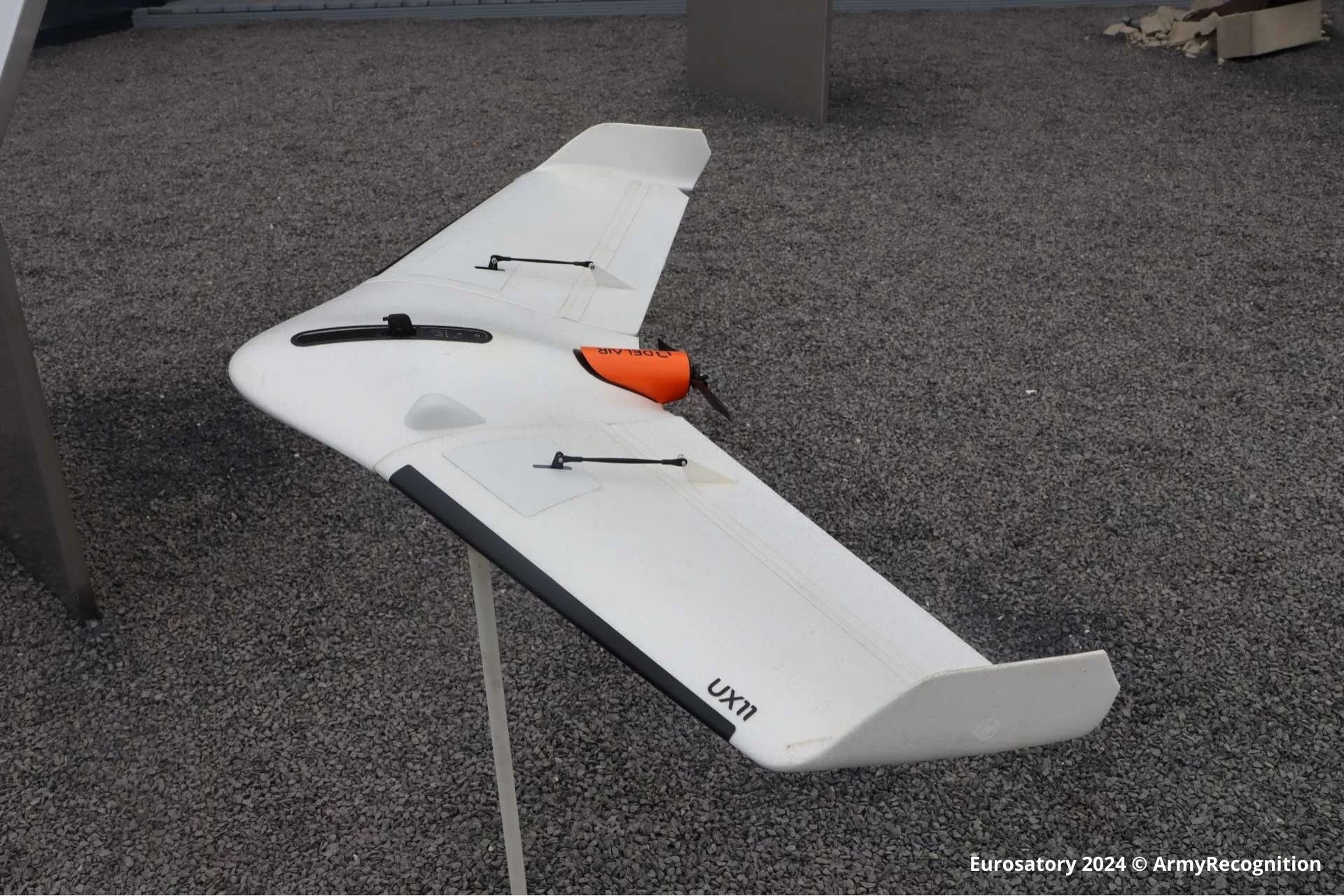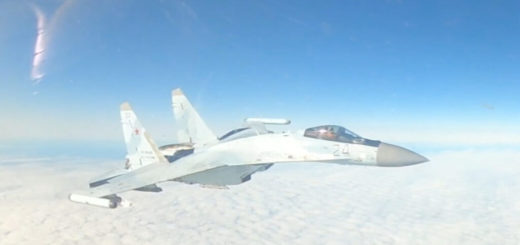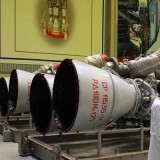France Turns to Its Automotive Industry for Military Drone Production

{loadposition bannertop}
{loadposition sidebarpub}
Amidst the ongoing war in Ukraine and rising tensions in Europe, France is seeking to adapt its defense industry to meet new battlefield requirements. Traditionally characterized by slow production cycles focused on high-performance equipment, the sector now faces the challenge of increasing both speed and volume. To address this, the French Directorate General of Armaments (DGA) is exploring new solutions by turning to the civilian industry, particularly the automotive sector, for the manufacturing of so-called “kamikaze” drones similar to those used in Ukraine, according to a report by L’Opinion on February 2, 2025.
Follow Army Recognition on Google News at this link
The Colibri is a loitering munition drone specially adapted for short-range missions (Picture source: Army Recognition)
These long-range remotely operated munitions (MTO), capable of striking targets over 100 kilometers away, could be produced by a yet undisclosed French industrial company. No firm orders have been placed at this stage, but the stated objective is clear: to deliver several thousand of these drones within a few months.
This initiative marks a shift in France’s defense production model, which for decades has prioritized high-tech equipment, designed through lengthy and meticulous processes, rather than rapid large-scale manufacturing. The war in Ukraine has highlighted the limitations of this approach, exposing the difficulties of adapting to the demands of high-intensity conflict. “This was not a criterion for us for decades,” acknowledges Emmanuel Chiva, the General Delegate for Armaments, emphasizing the need for a structural change. In response, the DGA is expanding its scope and looking to leverage expertise from other industries such as chemicals, energy, and even the agri-food sector, all accustomed to high-volume production.
This shift is not entirely new. During World War I, Michelin produced aircraft while Renault manufactured tanks. Today, despite a relative state of peace, France faces growing strategic challenges, yet its defense industry still operates under a model favoring technological excellence over production speed and scale. The Rafale fighter jet, submarines, and the nuclear deterrent exemplify this approach, where emphasis has historically been placed on high performance, often at the cost of extended production timelines and significant expenses. However, modern conflicts require greater responsiveness, and this model is struggling to meet those needs.
In June 2022, President Emmanuel Macron called for a transition to a “war economy”, a shift that has yet to be fully realized. Some notable progress has been made. Nexter, for example, has increased its production of 155mm shells sixtyfold since 2022, while Dassault Aviation is gradually reaching a production rate of three Rafale jets per month, compared to just one a decade ago. MBDA, meanwhile, is reducing the production time of the Aster air defense missile from 42 to 18 months by 2026. Despite these improvements, these lead times remain lengthy in the context of high-intensity warfare, where the rapid replenishment of equipment is crucial.
Aware of this challenge, Emmanuel Chiva has suggested new approaches, including the development of *“low-cost”* surface-to-air missile designs to accelerate their production. This initiative aims to foster innovation among defense manufacturers and the 4,500 small and medium-sized enterprises (SMEs) that form the backbone of the defense sector. The goal is to move away from a purely stock-based approach, where equipment ordered in batches reaches obsolescence simultaneously, toward a continuous supply system better suited to operational needs.
The integration of the automotive industry into drone production aligns with this broader effort to adapt to evolving strategic conditions. By leveraging the civilian sector’s expertise in rapid and large-scale manufacturing, the DGA aims to meet the growing demand for military equipment. If this initiative is successfully implemented, it could lead to a significant transformation in how France designs and produces its defense systems.
However, this transition toward a more agile and responsive defense industry raises several critical questions: the adaptation of industrial standards, the maintenance of quality requirements, and the state’s ability to swiftly scale up production in a crisis. In an increasingly uncertain geopolitical landscape, the success of this transformation will be a key test of France’s strategic resilience.

{loadposition bannertop}
{loadposition sidebarpub}
Amidst the ongoing war in Ukraine and rising tensions in Europe, France is seeking to adapt its defense industry to meet new battlefield requirements. Traditionally characterized by slow production cycles focused on high-performance equipment, the sector now faces the challenge of increasing both speed and volume. To address this, the French Directorate General of Armaments (DGA) is exploring new solutions by turning to the civilian industry, particularly the automotive sector, for the manufacturing of so-called “kamikaze” drones similar to those used in Ukraine, according to a report by L’Opinion on February 2, 2025.
The Colibri is a loitering munition drone specially adapted for short-range missions (Picture source: Army Recognition)
These long-range remotely operated munitions (MTO), capable of striking targets over 100 kilometers away, could be produced by a yet undisclosed French industrial company. No firm orders have been placed at this stage, but the stated objective is clear: to deliver several thousand of these drones within a few months.
This initiative marks a shift in France’s defense production model, which for decades has prioritized high-tech equipment, designed through lengthy and meticulous processes, rather than rapid large-scale manufacturing. The war in Ukraine has highlighted the limitations of this approach, exposing the difficulties of adapting to the demands of high-intensity conflict. “This was not a criterion for us for decades,” acknowledges Emmanuel Chiva, the General Delegate for Armaments, emphasizing the need for a structural change. In response, the DGA is expanding its scope and looking to leverage expertise from other industries such as chemicals, energy, and even the agri-food sector, all accustomed to high-volume production.
This shift is not entirely new. During World War I, Michelin produced aircraft while Renault manufactured tanks. Today, despite a relative state of peace, France faces growing strategic challenges, yet its defense industry still operates under a model favoring technological excellence over production speed and scale. The Rafale fighter jet, submarines, and the nuclear deterrent exemplify this approach, where emphasis has historically been placed on high performance, often at the cost of extended production timelines and significant expenses. However, modern conflicts require greater responsiveness, and this model is struggling to meet those needs.
In June 2022, President Emmanuel Macron called for a transition to a “war economy”, a shift that has yet to be fully realized. Some notable progress has been made. Nexter, for example, has increased its production of 155mm shells sixtyfold since 2022, while Dassault Aviation is gradually reaching a production rate of three Rafale jets per month, compared to just one a decade ago. MBDA, meanwhile, is reducing the production time of the Aster air defense missile from 42 to 18 months by 2026. Despite these improvements, these lead times remain lengthy in the context of high-intensity warfare, where the rapid replenishment of equipment is crucial.
Aware of this challenge, Emmanuel Chiva has suggested new approaches, including the development of *“low-cost”* surface-to-air missile designs to accelerate their production. This initiative aims to foster innovation among defense manufacturers and the 4,500 small and medium-sized enterprises (SMEs) that form the backbone of the defense sector. The goal is to move away from a purely stock-based approach, where equipment ordered in batches reaches obsolescence simultaneously, toward a continuous supply system better suited to operational needs.
The integration of the automotive industry into drone production aligns with this broader effort to adapt to evolving strategic conditions. By leveraging the civilian sector’s expertise in rapid and large-scale manufacturing, the DGA aims to meet the growing demand for military equipment. If this initiative is successfully implemented, it could lead to a significant transformation in how France designs and produces its defense systems.
However, this transition toward a more agile and responsive defense industry raises several critical questions: the adaptation of industrial standards, the maintenance of quality requirements, and the state’s ability to swiftly scale up production in a crisis. In an increasingly uncertain geopolitical landscape, the success of this transformation will be a key test of France’s strategic resilience.







